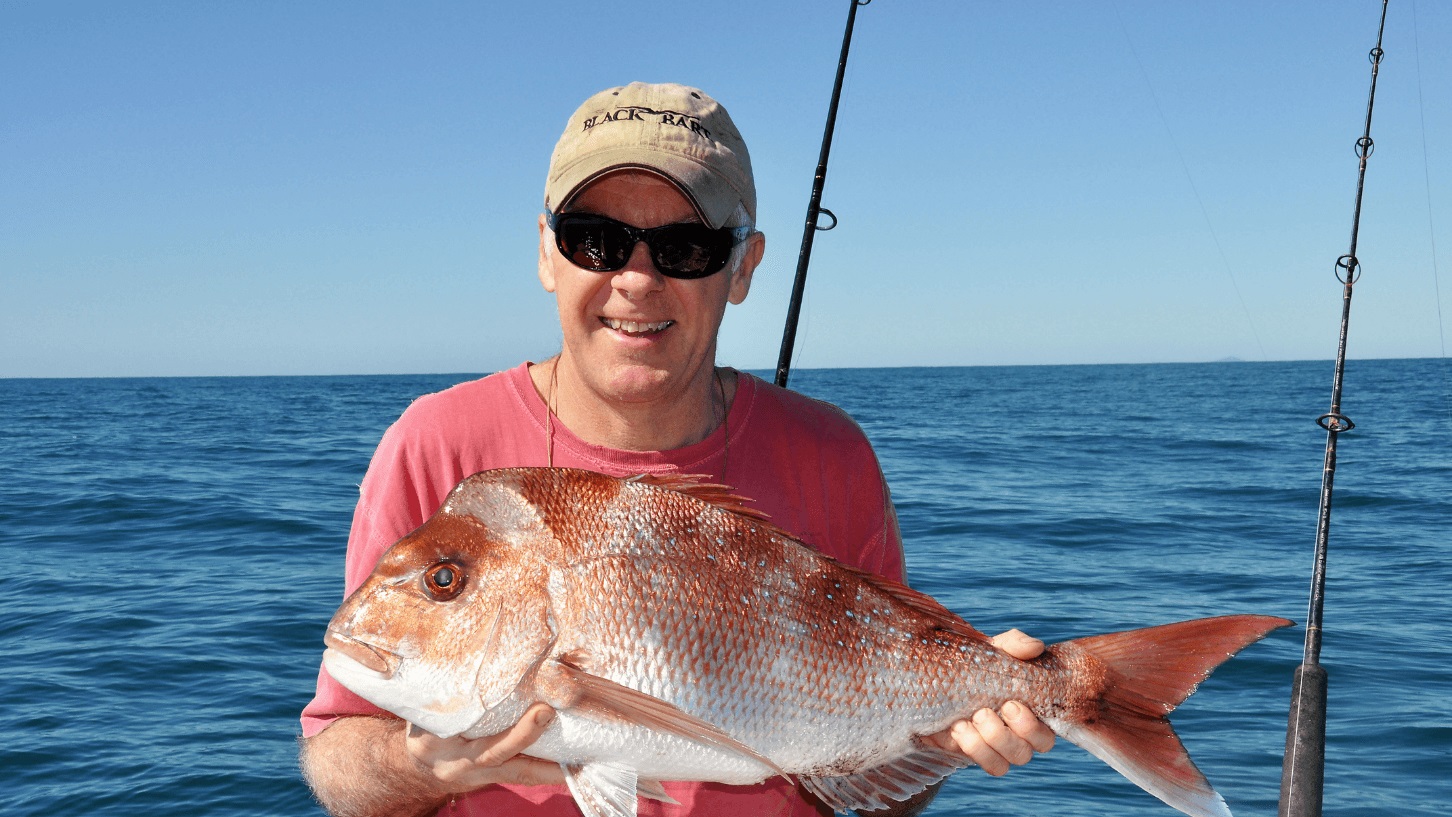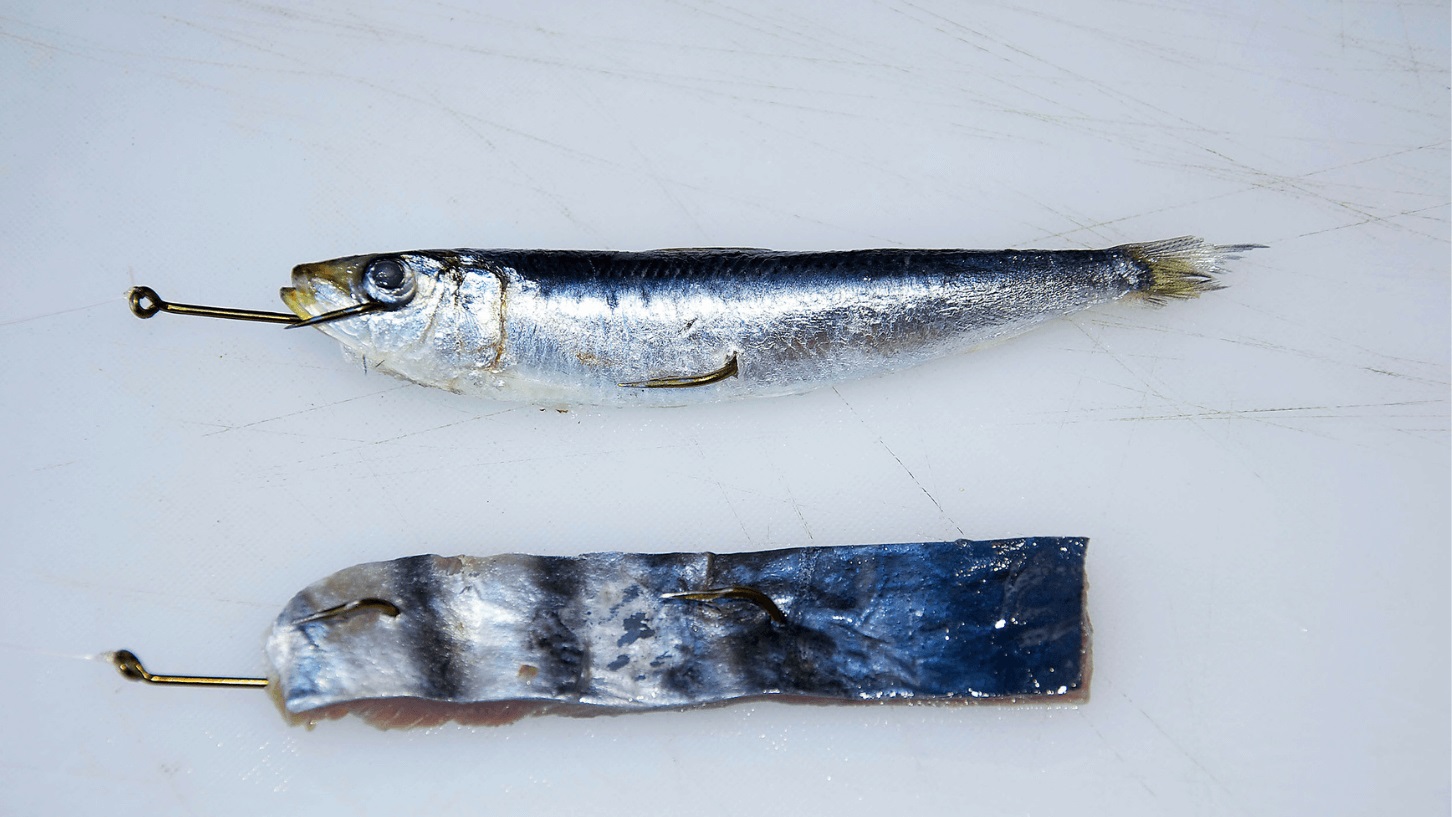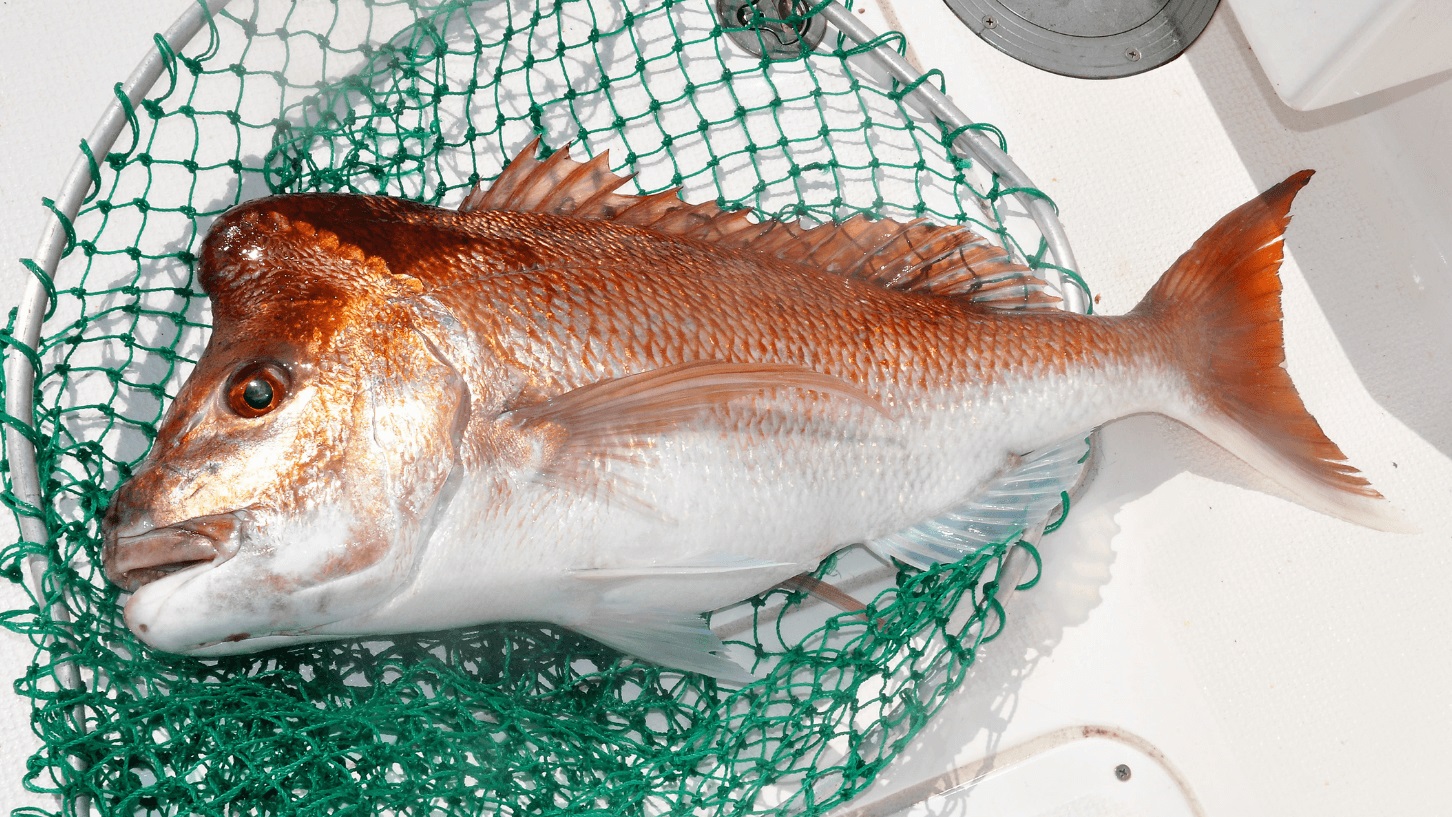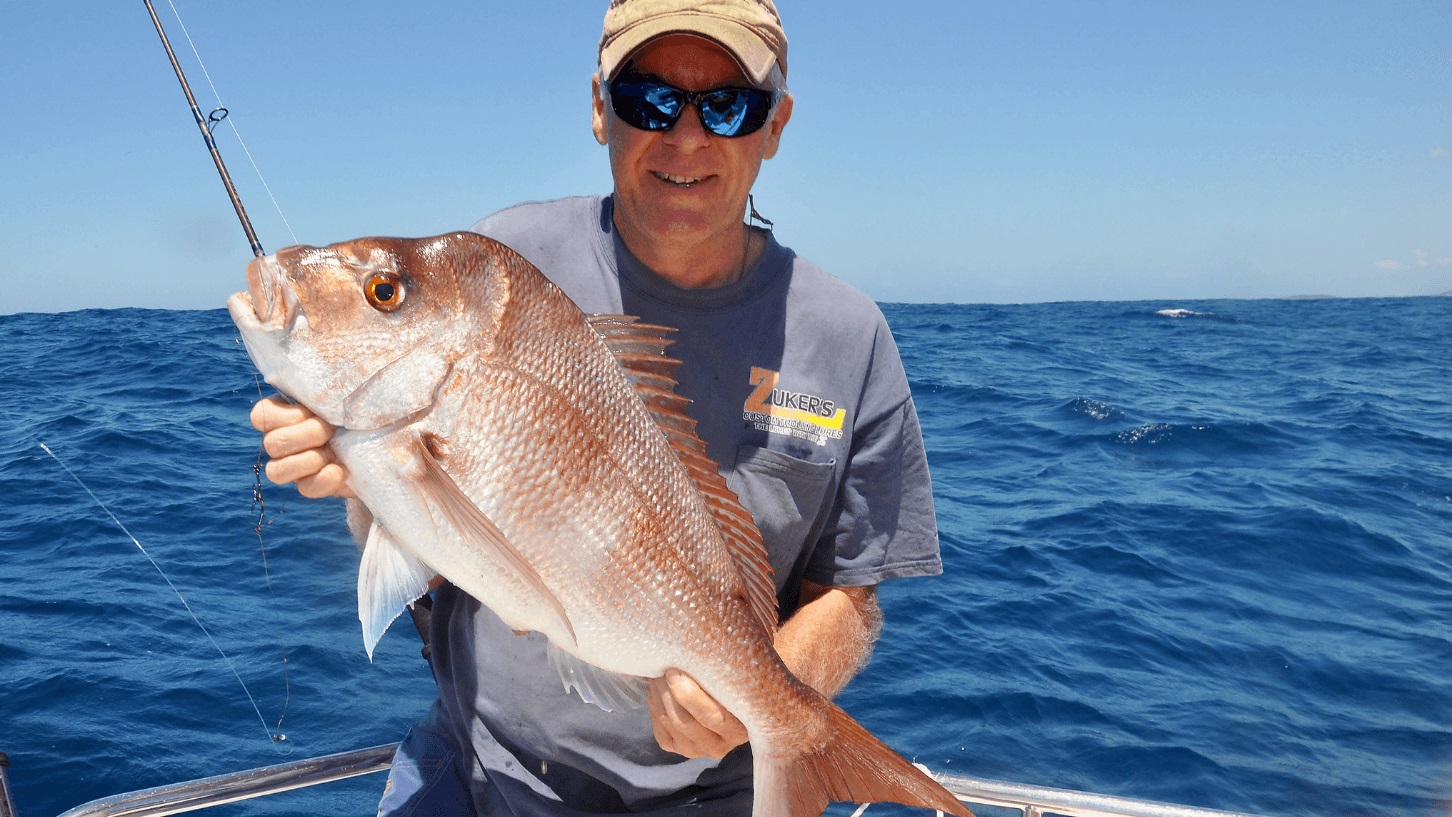| Your browser is not supported. | ||
|
Please browse our site using any of the following options:
| ||
How To Catch Winter Snapper

While winter certainly isn't the warmest time of year, a school of rampaging reds in the berley trail will soon heat things up. Glen Booth explains.
Winter and the transition into spring is snapper season on the East Coast of Australia. Most of the marlin have slipped away to go do whatever they do in the vast Pacific, the mackerel have withdrawn to behind the banana curtain, and tuna fishing can be very much weather dependent.
Inshore, however, there is a lot of fishing on offer and even if those icy sou' westers are pumping, there's usually a protected corner behind a headland that can be fished. And when those big, slow moving high-pressure systems start drifting across the continent, there can be dream weather windows for days on end.
In saying that, a rip-roaring southerly can really fire the snapper up. Snapper are full of reckless disregard after a couple of days of big seas, and that first fishable day invariably sees some nice winter reds decked.
Anchoring and bait fishing in conjunction with a berley trail also expands the catch list dramatically. Snapper of all sizes are often accompanied by pearl perch, teraglin, tuskfish, jewfish and kings. Of course, berley stirs up less desirable species as well, but let's concentrate on the positives. Besides which, when the reds are in full flight, the less desirable fish struggle to get a look-in.
If you're in position before dawn, shallow water is the place to be - reef complexes just off the beach, in fact. As the sun rises, the bite usually tapers off, and deeper water is the next port of call.
Overcast days can extend the inshore bite window though, and I have enjoyed some inexplicably red hot bites with the sun directly overhead. But for the rest of the time, successful floater fishing usually takes place in water between 10 and 25 fathoms deep. Anything beyond that is probably stretching the friendship, unless there's negligible current.
Float lining for snapper
Float lining is effectively the process of casting a very lightly weighted bait down through a berley trail. Snapper are suckers for a slow sinking bait, which is what makes this technique so popular and effective.
Nationwide, the West Australian pilchard (or its local derivative) is the number one snapper bait.
IQF (individually quick frozen) boxes of 4-15kg size are a better value than block pillies, as there's less wastage and it's possible to tailor the amount to suit a day's fishing. What doesn't get used on one trip can be re-used on the next or turned into berley. A handful of table salt toughens them up for a second crack, and snapper don't seem to mind slightly stale bait.

Long baits like pilchards and tuna strips are best presented on a ganged hook rig when float lining for snapper. I use a pair of 3/0 and 4/0 Mustad hooks linked by a number 9 or 10 barrel swivel, but a standard double gang hook rig will also work.
A three-hook gang might be necessary for long baits such as garfish and pike - two under-heralded but extremely worthwhile snapper baits - that are also easy and fun to gather yourself.
Speaking of which, bait gathering is a fun and worthwhile exercise in itself.
Summer months see a cord line with a couple of pink squids positioned amongst the heavy tackle outfits while trolling for marlin. To avoid a short-lived hookup on a billfish - and they're past masters at finding the wrong lure on the wrong gear - the crash line is kept on-board until working birds are sighted.
Muscling stripies to the boat on a length of VB cord is also good fun; the only downside being the skipper (me) totally losing his mind with every skipjack that falls off at the side of the boat. As snapper bait, tuna strips really are hard to beat. Mack tuna and frigate mackerel are also gun cut baits.
Aside from the space it will take up, rather than freeze the tuna whole, it's best to knock the fillets off, sprinkle the flesh side with coarse salt, wrap in newspaper and freeze. The salt will draw the moisture out, making for a much tougher bait that will resist pickers until a winter snapper finds it.
Periodically while fishing floaters, a mysterious weight will come on the line, which is usually a squid tearing chunks out of that pilchard. A steady retrieve may see you slipping a net under tonight's entree, but most times they drop off in plain sight. This is when having a squid jig ready-rigged on a handline comes in handy.
For those who have better success in the cephalopod stakes (or even target them specifically), whether fished whole or split in two, a squid head makes great big snapper bait. Threaded onto a single hook like a beach worm, the individual tentacles are largely picker free too.
Snapper berley basics
It's certainly possible to catch winter snapper by fishing baits back down to the reef, but it's berley that really brings them undone.
It's immensely satisfying to clean the catch and recognise a piece of something you'd flicked off the bait board earlier in the day. Remarkably, what turns up in their guts is often not a juicy chunk of meat, but a piece of skin, head or backbone that nobody in their right mind would consider putting on a hook. Or would they?
Berley pellets make for an efficient process, but prawn shells stockpiled over summer, and bits and pieces like old pilchards are also sufficient to keep the trail going all day if necessary.
While berley can liven up the reef, it can also get the rubbish on the move. This may not be altogether bad, especially if yellowtail and slimy mackerel are present. A small live yakka can produce some quality snapper, and the fillets of both bait species make excellent strip baits.
If the pickers are particularly savage, try a whole butterflied yellowtail, or a slimy or yakka head split down the middle. Hard baits like this will also produce a substantially better class of snapper, but there can be a long time between bites.
The key to success with the float lining technique is to have that pilchard or strip bait wafting down as naturally as possible with the berley, until it's in the bottom third of the water column.
What we don't want is the bait plummeting to the depths below and snagging up, or holding up too high, away from where the snapper will be dining on the berley. The trick is then, to get the sinker weight right. Depending on the day and the location, you might go from no lead at all to the biggest ball sinker on the market. Sometimes an adjustment up or down, just one size, is all that's needed to tap into a memorable bite.
And as always with berley, it's a little, often. We're not trying to lure tigers up off the bottom in 100 fathoms here, so don't go too hard.

Snapper float lining gear
Spinning reels and snapper fishing just go together. The only drawback with spinning reels is when fishing in strong current, as the spool diameter drops, the line drags on the lip and doesn't peel off the spool as smoothly, so the bait can potentially hold up off the bottom.
For spinning reels, 10-20kg braid will suffice, with a couple of rod lengths of 10kg monofilament leader at the business end. It's definitely good insurance to re-rig after each big fish, or if the leader material shows any sign of scuffing.
Just about every rod manufacturer on the planet has a versatile 7' spinning rod in their lineup, and depending on the line weight, all get the job done.
Snapper bottom fishing outfits
Aside from a float lining rod (or two), it's imperative to have a paternoster rig down as well. For some inexplicable reason, on some days the floating baits are completely ignored by the snapper, especially early in the season. This outfit can be spin or overhead, a handline sitting in a side pocket, or tied off on a springer if you're strictly old school.
With a snapper sinker on the bottom and one or two droppers above it, this rig produces mostly smaller fish (with the occasional hump-headed surprise), but depending on the geographic location, pearl perch, tuskfish and teraglin come into the picture - and no-one is ever sad about that.
When it comes to line, 24-37kg braid is a must for good bite detection, especially in deeper water, and droppers made from 24kg leader is usually sufficient.
The Black Magic KL hook in 5/0 is an excellent pattern for this approach. A semi-circle shape, they're great for set and forget fishing while you tend to the floaters and keep the berley going. A lumo bead on the dropper above the hook is a nice piece of added bling that may or may not make a difference. And instead of running a snapper lead on the bottom, try a jigging lure for some tasty bonuses.
Anchoring up for winter snapper
Fish finders are excellent right across the board these days, and it's possible to establish if anyone's at home downstairs long before putting a line in the water. Even if you're not marking snapper, any form of fish activity is better than nothing. There'll be reds around somewhere. Barren reefs are best avoided.
Ideally, choose a high peak of the reef and fish off the back with the current (assuming it's flowing north to south). A bit of prospecting on the drift prior to anchoring can tell you a lot, and the GPS will also show the direction and speed of the current, which can be important for planting that pick accurately.
Current against wind can ruin a session, as snapper don't seem to like hanging around the anchor rope slapping and snapping taut, no matter how diligently you berley. It's also hard to manage lines, especially if there are a few people fishing. In these situations, it's best to relocate inshore, out of the current.
A reef anchor is a necessity, as is a good length of solid chain (about a boat length), to hold you in place. If you find the prongs are too long and straighten out in a bit of swell, shorten them up with a hacksaw.
Whichever you choose, both need to be rigged to 'trip' if the anchor gets stuck in the reef. The chain is shackled to the eyelet at the bottom of the shank, with cable ties holding the chain in place at the top. These then break when sufficient force is placed upon them and the anchor slides out the way it went in - most times…
Unless you have an electric winch, a pink bubble attached to the anchor rope (either shackled to a stainless ring running along it, or via an oversize snap clip) is a near effortless way of retrieving the anchor. The boat is driven forward and back up the rope, the float slides along it, then over the chain, and you motor back around and haul it aboard. Simples!

THE END GAME
Gaffing snapper went out with cuttyhunk line. If you plan to let the fish go, use an Environet. Otherwise, a deep pocket mesh net with a wide mouth will suffice. Once it's in the boat, cut the fish's throat and let it bleed out in a fish tub of water before burying it in an ice slurry. Brain-spike it too, if you think that makes a difference.
I stopped using servo ice years ago, instead making my own saltwater ice in containers scrounged from the local ice cream shop. Be careful not to have the brew too cold though, as it can actually freeze the catch before you get it to the cleaning table.
Finally, a vacuum packing machine is a must-have in any serious fisho's household. Not only does it increase frozen fish's shelf life by months, it's a good way of storing bait such as garfish, yellowtail and pilchards.
Find your local Anaconda store and check out our extensive range of fishing tackle to get you ready for your winter snapper mission.